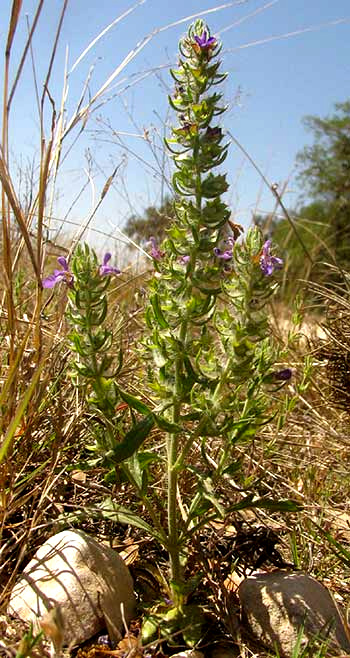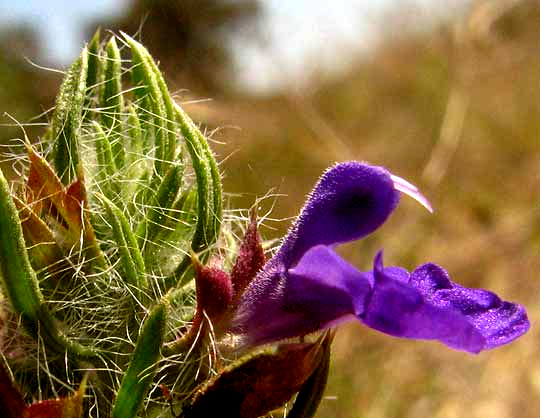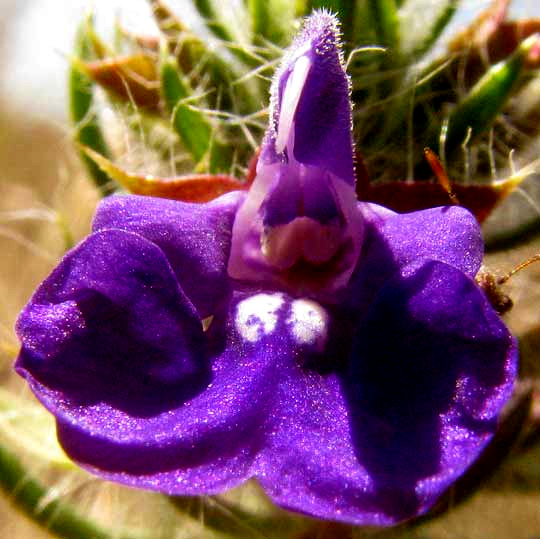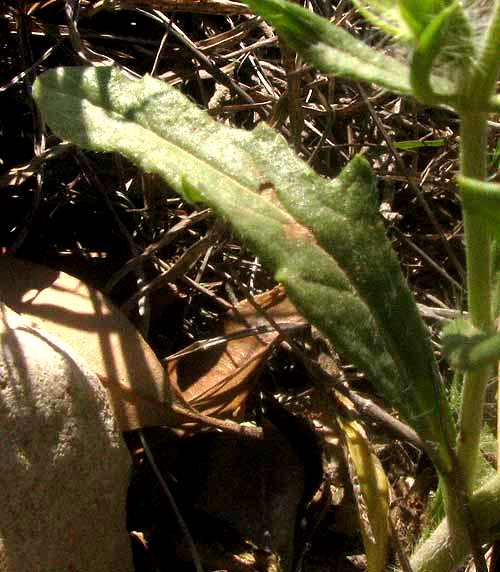Excerpts from Jim Conrad's
Naturalist Newsletter
from the May 11, 2014 Newsletter issued from the Frio Canyon Nature Education Center in the valley of the Dry Frio River in northern Uvalde County, southwestern Texas, on the southern border of the Edwards Plateau; elevation ~1750m (~5750 ft); N29.62°, W99.86°; USA
TEXAS SAGE
Even with our drought, some wildflowers manage to blossom, and their ability to deal with so little rain is admirable. One such foot-tall survivor in thin, dry, rocky soil, surrounded by brown, dry-crisp grass, is shown below:

You expect such an herb with two leaves per stem node -- opposite leaves -- and pagoda-like flower clusters to be a member of the Mint Family, even before you check for the squared stem. And when you see this plant's strongly bilaterally symmetrical corollas -- like little dog faces trying to bite -- you're even more certain. You can see this plant's typical Mint Family flower below:

The corolla seen from the front appears below:

Notice that the corolla's two lower lobes expand into a broad "landing pad" for pollinators. Also, the slender, white style arches beneath the crest of the corolla's top, scoop-shaped lobe, and extends beyond the lobe's end, projecting downward, ready to collect pollen from the back of any pollinator entering the corolla tube in search of nectar.
This configuration is just like what we've seen among the sages, genus Salvia, and in fact that's what we have here. It's the Texas Sage, SALVIA TEXANA, endemic just to Texas, mostly the central area, plus a small part of southeastern New Mexico and northern Mexico. Below, you can see one of its slender, shallowly lobed leaves:

With nearly 1000 Salvia species recognized, that genus is the largest of the Mint Family, and several Salvia species are found in our area. Lot's of red-flowered Cedar Sages, Salvia roemeriana, grace our limestone hills. Also in our area there's the very similar Engelman's Sage, Salvia engelmani, but that's a little larger, and the scoop-shaped upper corolla lobe is proportionally longer and more slender than the Texas Sage's. All three of these sage species are narrowly endemic to our area. In fact, lots of sages are narrowly endemic -- found in just a small area -- so it's always worthwhile to pay special attention to a newly encountered sage, for you might have something rarely encountered.
One reason our Texas Sage manages to prosper during our drought is because ecologically it's adapted to especially dry environments. It's described as occupying well-drained limestone soils, especially in prairies and on hillsides, slopes, and ledges.